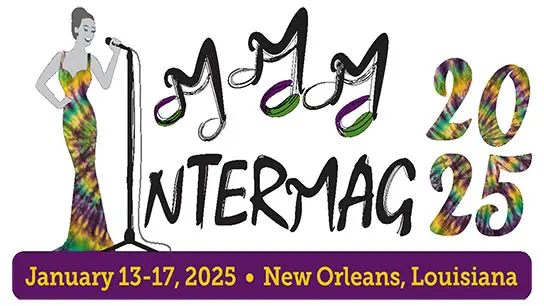FF-05 Minnealloy: An Ultra-High Saturation Magnetization Soft Ferromagnet
Sean Bishop, Philippe Weck, Tyra Douglas, CJ Pearce, Daniel Lowry, Landon Schnebly, Dominic Bosomtwi, William Echtenkamp, and JP Wang
Oral
13 Jan 2025
Industry, telecommunications, and electrical grid technology rely on magnetic components such as inductors and transformers. However, the cores for many of these components contain critical materials [1] that are susceptible to availability and supply chain risks. A rare-earth and critical material free alternative called Minnealloy, α”-Fe16NC, is being developed to replaced grain oriented electrical steel (GOES), non-oriented electrical steel (NOES), and amorphous metal (AM). Minnealloy’s small magnetic coercivity (197 A/m bulk phase, ~5 A/m engineered [2,3]), intermediate resistivity (≥ 30 x 10-8 Ωm) and gargantuan magnetic flux density (≥ 2.47T) result in low losses and more power transferred per cycle than any existing transformer core material for a given mass or volume [4,5,6,7]. It is predicted to operate at higher frequencies (> 100 MHz) and known to operate at higher power, with comparable hysteresis and lower eddy current losses, than GOES, NOES, and AM. Replacing a silicon steel transformer core with Minnealloy will result in up to a 33% volume and weight reduction; replacing a high-frequency ferrite transformer core with Minnealloy will result in an 80% volume reduction. However, achieving high phase purity in bulk samples to demonstrate the expected material performance remains a challenge. In this talk, and accompanying conference paper, we will discuss powder and ribbon fabrication routes, magnetic properties measurements, density functional theory modeling, and a path to higher phase purity for commercial application. Sandia National Laboratories is a multimission laboratory managed and operated by National Technology & Engineering Solutions of Sandia, LLC, a wholly owned subsidiary of Honeywell International Inc., for the U.S. Department of Energy’s National Nuclear Security Administration under contract DE-NA0003525.References: [1] D. J. Bauer, R. T. Nguyen, and B.J. Smith, “Critical Materials Assessment,” U.S. Department of Energy, Washington D.C., Rep. DOE/EE-2756, July 2023. [2] H. Giselher, "Modern soft magnets: Amorphous and nanocrystalline materials," Acta Mater., vol. 61, pp. 718-734, Feb. 2013. [3] F.C. Li, T. Liu, J.Y. Zhang, S. Shuang, Q. Wang, A.D. Wang, J.G. Wang, and Y. Yang, "Amorphous–nanocrystalline alloys: fabrication, properties, and applications," Mater. Today Adv., vol. 4, Dec. 2019. [4] M. D. Mehedi, Y. Jiang, P. K. Suri, D. J. Flannigan, and J-P Wang, “Minnealloy: a new magnetic material with high saturation flux density and low magnetic anisotropy,” J. Phys. D: Appl. Phys., vol. 50, no. 37, Aug. 2017. [5] X. Zhang and J-P Wang, "High saturation magnetization and low magnetic anisotropy Fe-CN martensite thin film," Appl. Phys. Lett., vol. 114, iss. 15, Apr. 2019. [6] G. Guo, J. Liu, and JP Wang, "Carbon and microstructure effects on the magnetic properties of Fe–CN soft magnetic materials (Minnealloy)," TMS 2020 149th Annual Meeting & Exhibition Supplemental Proceedings, pp. 1841-1852, Feb. 2020. [7] Y. Sugita, H. Takahashi, M. Komuro, M. Igarashi, R. Imura, and T. Kambe "Magnetic and electrical properties of single phase, single crystal Fe16N2 films epitaxially grown by molecular beam epitaxy," J. Appl. Phys., vol. 79, pp. 5576-5581, Apr. 1996.
